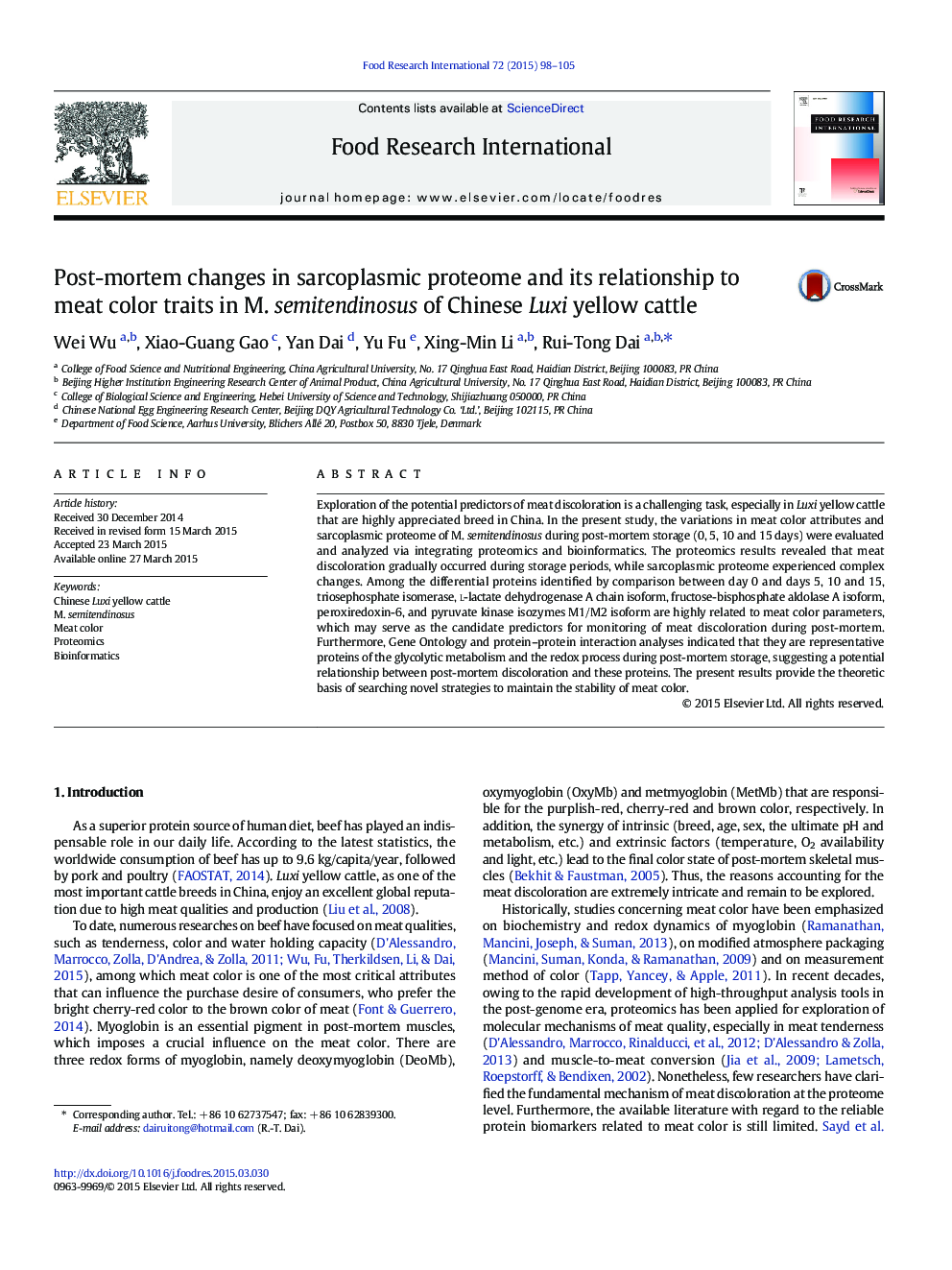| Article ID | Journal | Published Year | Pages | File Type |
|---|---|---|---|---|
| 4561466 | Food Research International | 2015 | 8 Pages |
•Proteome changes in M. semitendinosus during post-mortem storage are presented.•Differential abundance proteins that correlated with meat color traits are found.•Bioinformatics are used to assist the analysis of proteomics results.•TPI1, LDHA, ALDOA, PRDX6 and PKM2 are potential predictors of meat color traits.
Exploration of the potential predictors of meat discoloration is a challenging task, especially in Luxi yellow cattle that are highly appreciated breed in China. In the present study, the variations in meat color attributes and sarcoplasmic proteome of M. semitendinosus during post-mortem storage (0, 5, 10 and 15 days) were evaluated and analyzed via integrating proteomics and bioinformatics. The proteomics results revealed that meat discoloration gradually occurred during storage periods, while sarcoplasmic proteome experienced complex changes. Among the differential proteins identified by comparison between day 0 and days 5, 10 and 15, triosephosphate isomerase, l-lactate dehydrogenase A chain isoform, fructose-bisphosphate aldolase A isoform, peroxiredoxin-6, and pyruvate kinase isozymes M1/M2 isoform are highly related to meat color parameters, which may serve as the candidate predictors for monitoring of meat discoloration during post-mortem. Furthermore, Gene Ontology and protein–protein interaction analyses indicated that they are representative proteins of the glycolytic metabolism and the redox process during post-mortem storage, suggesting a potential relationship between post-mortem discoloration and these proteins. The present results provide the theoretic basis of searching novel strategies to maintain the stability of meat color.
